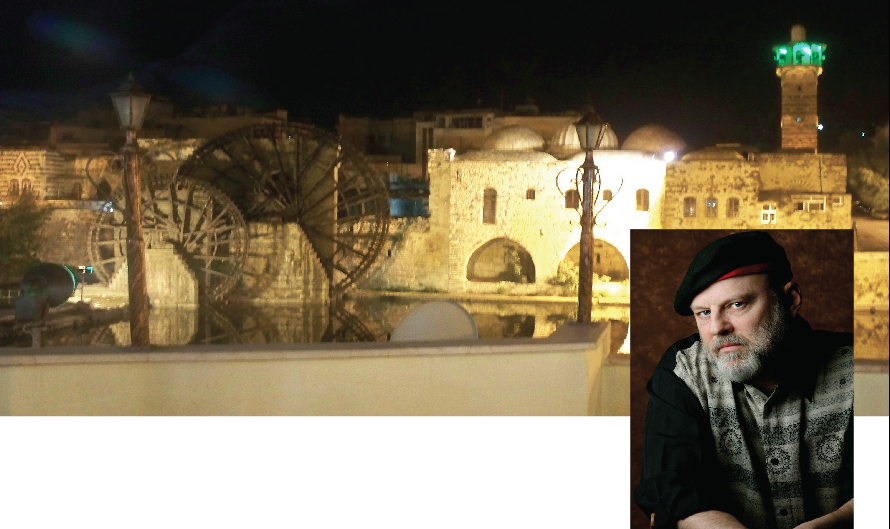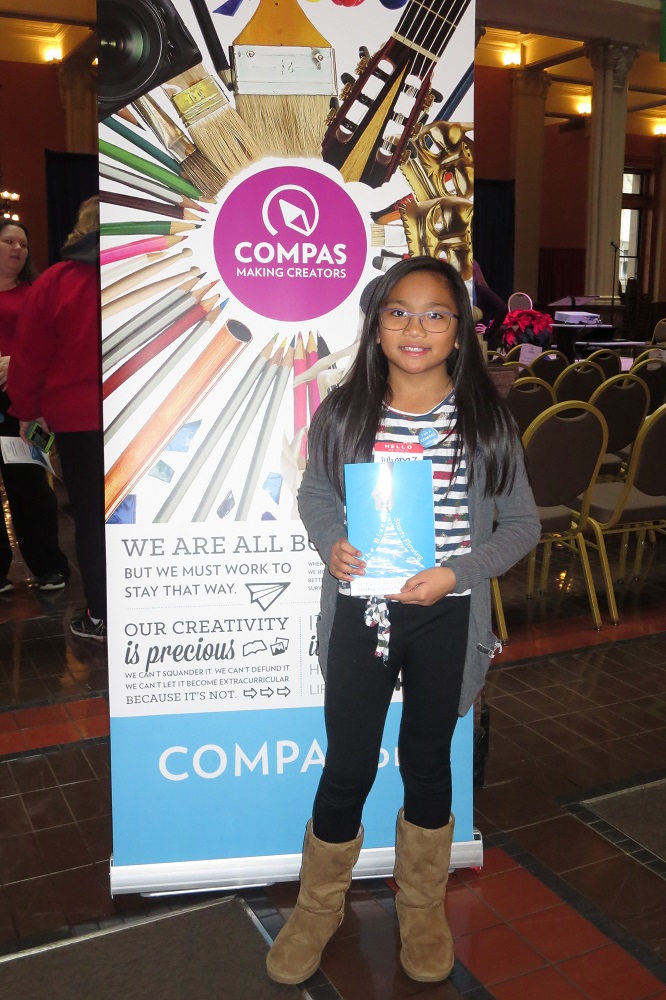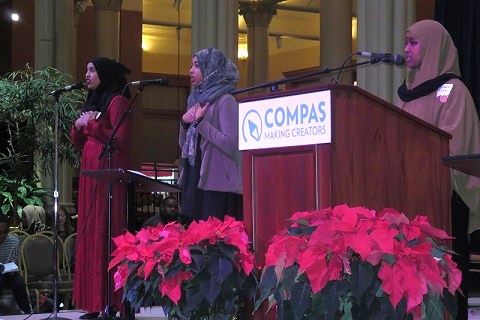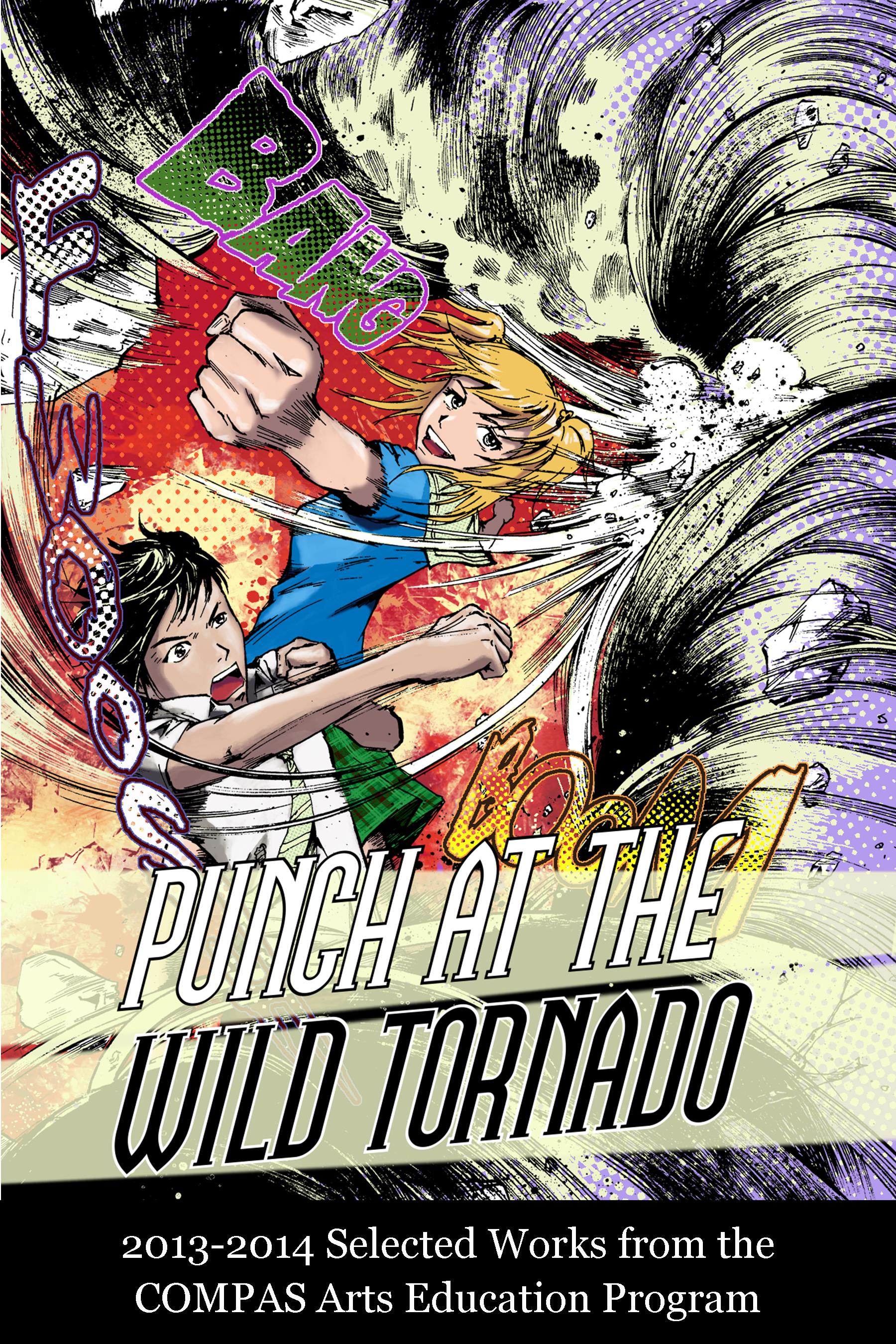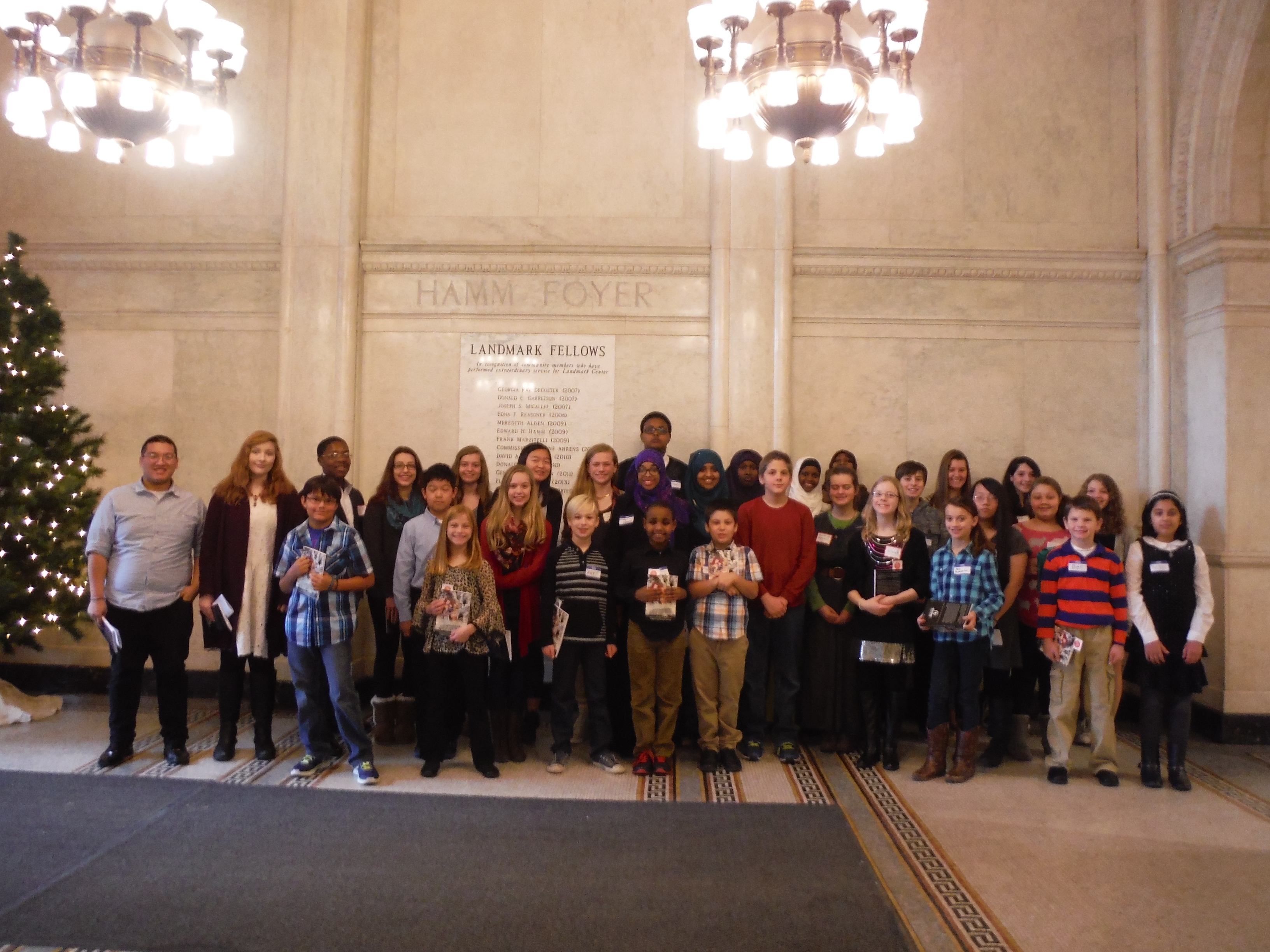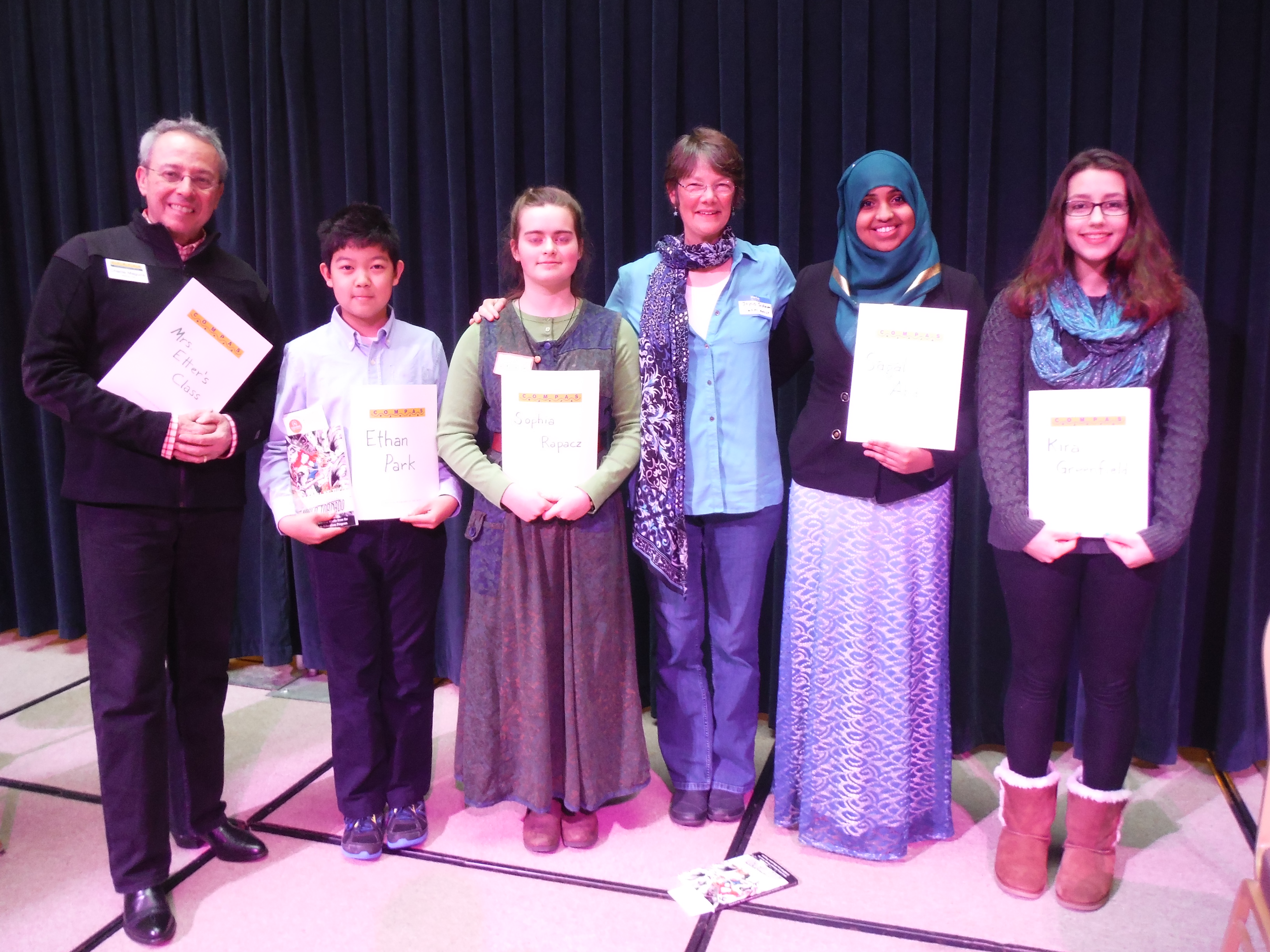16 December 2015
Just released—the 36th volume in the long-running COMPAS series of Anthologies of Student Writing, The River Starts Flowing. Proud editor—Daniel Gabriel. Once again, we collected the best stories, poems, songs, memoirs, and spoken word pieces from K-12 students around the state of Minnesota and put them together in a bound volume that signals heartfelt and exciting paths to the future.
And once again, we gathered on the 2nd Saturday in December to celebrate these students’ achievements in the elegant Cortile of Landmark Center in downtown St. Paul. Several families came hundreds of miles from Roseau, up on the Canadian border, to attend. Rochester STEM Academy, whose work was featured in multiple selections, brought a busload of students, staff, and family members up from the south. Kids large and small set aside their fears of public speaking and amazed the jam-packed crowd with their insights.
We opened with “My Place,” a moving piece from a Nepalese girl, written during last year’s devastating earthquakes in her homeland, and we closed with three Somali girls line sync-performing a tribute to their homeland, “East Africa’s Most Beautiful: Somalia.” No question, these young students are connected to the world at large.
Lest it be thought that all good young writers are girls, and all best topics are foreign, two of the strongest pieces in the book were done by boys from the far north. Jordan Moser’s “More Than Hunting” took this city-lubber inside hunting camp in a way that I’d never thought possible, and Michael Thompson’s “Remember the Days” was an eloquent memorial to a lost life, brilliantly expressed in taut imagery.
Some pieces were funny, particularly some of the clever stories written by kids in elementary school. Many were saddening commentaries on youthful exclusion and misunderstanding. All used language effectively to talk back to the world, to stake their claim, to find a platform. You can’t see for sure where all this will pour out into the great sea of human endeavor, but this is definitely where the river starts flowing . . .
